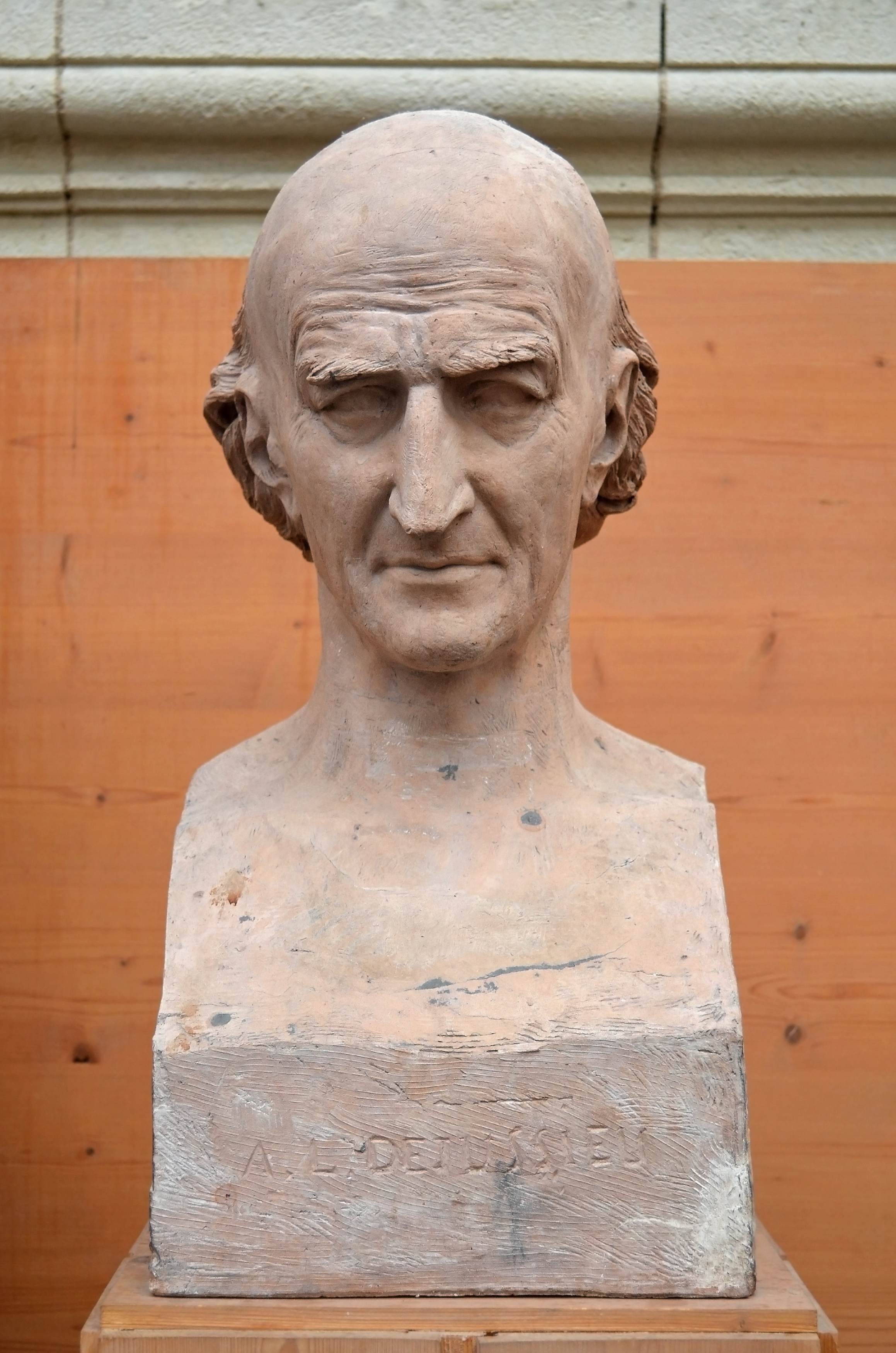|
Alter Botanischer Garten Tübingen
The Alter Botanischer Garten Tübingen (English: The Old Botanic Garden) is the former botanical garden of the University of Tübingen, now a municipal park. It is located at Am Stadtgraben 9, Tübingen, Baden-Württemberg, Germany, and open daily without charge. History The garden traces back to 1535 when medicinal plants were first grown by Leonhart Fuchs (1501-1566) beside the Nonnenhaus (House of the Nuns), which still exists. In 1663 a ''Hortus medicus'' was created by direction of Eberhard III, Duke of Württemberg (1614–74), with university gardener appointed in 1666. In 1681 Georg Balthasar Metzger (1623-1687) was named director, followed in 1688 by Rudolph Jacob Camerarius (1655-1721). The first greenhouse was completed in 1744, and noted botanist Johann Georg Gmelin (1709-1755) appointed director in 1751. In 1804 a new garden was established by decree of King Frederick of Württemberg (1754-1816) under the leadership of Professor Carl Friedrich Kielmeyer (1765-1844 ... [...More Info...] [...Related Items...] OR: [Wikipedia] [Google] [Baidu] |
Tübingen Alter Botanischer Garten
Tübingen (, , Swabian: ''Dibenga'') is a traditional university city in central Baden-Württemberg, Germany. It is situated south of the state capital, Stuttgart, and developed on both sides of the Neckar and Ammer rivers. about one in three of the 90,000 people living in Tübingen is a student. As of the 2018/2019 winter semester, 27,665 students attend the Eberhard Karls University of Tübingen. The city has the lowest median age in Germany, in part due to its status as a university city. As of December 31, 2015, the average age of a citizen of Tübingen is 39.1 years. The city is known for its veganism and environmentalism. Immediately north of the city lies the Schönbuch, a densely wooded nature park. The Swabian Alb mountains rise about (beeline Tübingen City to Roßberg - 869 m) to the southeast of Tübingen. The Ammer and Steinlach rivers are tributaries of the Neckar river, which flows in an easterly direction through the city, just south of the medieval ol ... [...More Info...] [...Related Items...] OR: [Wikipedia] [Google] [Baidu] |
Carl Friedrich Kielmeyer
Carl Friedrich Kielmeyer (22 October 1765 – 14 August 1844) was a German biologist and naturalist born in Bebenhausen, today part of the city of Tübingen. He was a pioneer of '' Naturphilosophie'', helped to establish organic chemistry (''Pflanzenchemie'') as a field, and developed an early version of recapitulation theory through the observation of animal embryos. Career He initially studied at Karlsschule Stuttgart, then furthered his education at the University of Göttingen (1786–88), where he had as instructors Johann Friedrich Blumenbach, Johann Friedrich Gmelin and Georg Christoph Lichtenberg. Afterwards, he returned to Karlsschule Stuttgart, where in 1792 he was appointed professor of chemistry. In 1796 he became a professor of chemistry and botany at the University of Tübingen, where he established the Botanischer Garten der Universität Tübingen in 1804. In 1816 he returned to Stuttgart as scientific director of the royal library, botanical garden, et al. He ... [...More Info...] [...Related Items...] OR: [Wikipedia] [Google] [Baidu] |
Gardens In Baden-Württemberg
A garden is a planned space, usually outdoors, set aside for the cultivation, display, and enjoyment of plants and other forms of nature. The single feature identifying even the wildest wild garden is ''control''. The garden can incorporate both natural and artificial materials. Gardens often have design features including statuary, follies, pergolas, trellises, stumperies, dry creek beds, and water features such as fountains, ponds (with or without fish), waterfalls or creeks. Some gardens are for ornamental purposes only, while others also produce food crops, sometimes in separate areas, or sometimes intermixed with the ornamental plants. Food-producing gardens are distinguished from farms by their smaller scale, more labor-intensive methods, and their purpose (enjoyment of a hobby or self-sustenance rather than producing for sale, as in a market garden). Flower gardens combine plants of different heights, colors, textures, and fragrances to create interest and delight the ... [...More Info...] [...Related Items...] OR: [Wikipedia] [Google] [Baidu] |
Botanical Gardens In Germany
Botany, also called , plant biology or phytology, is the science of plant life and a branch of biology. A botanist, plant scientist or phytologist is a scientist who specialises in this field. The term "botany" comes from the Ancient Greek word (''botanē'') meaning "pasture", "herbs" "grass", or "fodder"; is in turn derived from (), "to feed" or "to graze". Traditionally, botany has also included the study of fungi and algae by mycologists and phycologists respectively, with the study of these three groups of organisms remaining within the sphere of interest of the International Botanical Congress. Nowadays, botanists (in the strict sense) study approximately 410,000 species of land plants of which some 391,000 species are vascular plants (including approximately 369,000 species of flowering plants), and approximately 20,000 are bryophytes. Botany originated in prehistory as herbalism with the efforts of early humans to identify – and later cultivate – edible, medici ... [...More Info...] [...Related Items...] OR: [Wikipedia] [Google] [Baidu] |
List Of Botanical Gardens In Germany ...
This is a list of botanical gardens in Germany. This list is intended to contain all significant botanical gardens and arboreta in Germany. List See also * List of botanical gardens References Zentralregister biologischer Forschungssammlungen in DeutschlandConvention on Biological Diversity: Germany External links *{{Commonscat-inline, Botanical gardens in Germany ! ! Germany Botanical gardens A botanical garden or botanic gardenThe terms ''botanic'' and ''botanical'' and ''garden'' or ''gardens'' are used more-or-less interchangeably, although the word ''botanic'' is generally reserved for the earlier, more traditional gardens, an ... [...More Info...] [...Related Items...] OR: [Wikipedia] [Google] [Baidu] |
Botanischer Garten Der Universität Tübingen
The Botanischer Garten der Universität Tübingen, also known as the Botanischer Garten Tübingen or the Neuer Botanischer Garten Tübingen, is a botanical garden and arboretum maintained by the University of Tübingen. It is located at Hartmeyerstrasse 123, Tübingen, Baden-Württemberg, Germany, and open daily. The garden traces back to 1535 when medicinal plants were first grown by Leonhart Fuchs (1501-1566). In 1663 a ''Hortus Medicus'' was created by direction of Eberhard III, Duke of Württemberg (1614–74), with university gardener appointed in 1666. In 1681 Georg Balthasar Metzger (1623-1687) was named director, followed in 1688 by Rudolph Jacob Camerarius (1655-1721). The first greenhouse was completed in 1744, and noted botanist Johann Georg Gmelin (1709-1755) appointed director in 1751. In 1804 a new garden was established by decree of King Frederick of Württemberg (1754-1816) under the leadership of Professor Carl Friedrich Kielmeyer (1765-1844), which grew an ... [...More Info...] [...Related Items...] OR: [Wikipedia] [Google] [Baidu] |
Eichler System
A system of plant taxonomy, the Eichler system was the first phylogenetic (phyletic) or evolutionary system. It was developed by August W. Eichler (1839–1887), initially in his ''Blüthendiagramme'' (1875–1878) and then in successive editions of his ''Syllabus'' (1876–1890). After his death his colleague Adolf Engler (1844–1930) continued its development, and it became widely accepted. The system was based on dividing the plant kingdom into those plants with concealed reproductive organs (non-floral), the ( Cryptogamae, = hidden reproduction) and those with visible reproductive organs (floral), the ( Phanerogamae, = visible reproduction). Moreover, Eichler was the first taxonomist to separate the Phanerogamae into Angiosperms and Gymnosperms and the former into Monocotyledonae and Dicotyledonae. His primary ranks were Divisions (''Abtheilung''), followed by orders (''Reihe''). ''Blüthendiagramme'' (1875–1878) Volume I (1875) Contents pp. VI–VIII Synop ... [...More Info...] [...Related Items...] OR: [Wikipedia] [Google] [Baidu] |
Wilhelm Pfeffer
Wilhelm Friedrich Philipp Pfeffer (9 March 1845 – 31 January 1920) was a German botanist and plant physiologist born in Grebenstein. Academic career He studied chemistry and pharmacy at the University of Göttingen, where his instructors included Friedrich Wöhler (1800-1882), William Eduard Weber (1804-1891) and Wilhelm Rudolph Fittig (1835-1910). Afterwards, he furthered his education at the universities of Marburg and Berlin. At Berlin, he studied under Alexander Braun (1805-1877) and was an assistant to Nathanael Pringsheim (1823-1894). Later on, he served as an assistant to Julius von Sachs (1832-1897) at Würzburg, In 1873 he was appointed professor of pharmacology and botany at the University of Bonn, followed by professorships at the Universities of Basel (from 1877) and Tübingen (from 1878), where he also served as director of the Botanischer Garten der Universität Tübingen. In 1887 he became a professor at the University of Leipzig and director of its botanical ... [...More Info...] [...Related Items...] OR: [Wikipedia] [Google] [Baidu] |
Antoine Laurent De Jussieu
Antoine Laurent de Jussieu (; 12 April 1748 – 17 September 1836) was a French botanist, notable as the first to publish a natural classification of flowering plants; much of his system remains in use today. His classification was based on an extended unpublished work by his uncle, the botanist Bernard de Jussieu. Life Jussieu was born in Lyon, France, in 1748, as one of 10 children, to Christophle de Jussieu, an amateur botanist. His father's three younger brothers were also botanists. He went to Paris in 1765 to be with his uncle Bernard and to study medicine, graduating with a doctorate in 1770, with a thesis on animal and vegetable physiology. His uncle introduced him to the Jardin du Roi, where he was appointed as a botany Demonstrator and deputy to L. G. Le Monnier, professor of botany there in 1770. Le Monnier had succeeded Antoine-Laurent's uncle Antoine in 1759. Lectures by eminent botanists, including the Jusssieu dynasty were popular there, especially among ... [...More Info...] [...Related Items...] OR: [Wikipedia] [Google] [Baidu] |
Frederick Of Württemberg
Frederick may refer to: People * Frederick (given name), the name Nobility Anhalt-Harzgerode *Frederick, Prince of Anhalt-Harzgerode (1613–1670) Austria * Frederick I, Duke of Austria (Babenberg), Duke of Austria from 1195 to 1198 * Frederick II, Duke of Austria (1219–1246), last Duke of Austria from the Babenberg dynasty * Frederick the Fair (Frederick I of Austria (Habsburg), 1286–1330), Duke of Austria and King of the Romans Baden * Frederick I, Grand Duke of Baden (1826–1907), Grand Duke of Baden * Frederick II, Grand Duke of Baden (1857–1928), Grand Duke of Baden Bohemia * Frederick, Duke of Bohemia (died 1189), Duke of Olomouc and Bohemia Britain * Frederick, Prince of Wales (1707–1751), eldest son of King George II of Great Britain Brandenburg/Prussia * Frederick I, Elector of Brandenburg (1371–1440), also known as Frederick VI, Burgrave of Nuremberg * Frederick II, Elector of Brandenburg (1413–1470), Margrave of Brandenburg * Frederick William, Elect ... [...More Info...] [...Related Items...] OR: [Wikipedia] [Google] [Baidu] |
Botanical Garden
A botanical garden or botanic gardenThe terms ''botanic'' and ''botanical'' and ''garden'' or ''gardens'' are used more-or-less interchangeably, although the word ''botanic'' is generally reserved for the earlier, more traditional gardens, and is the more usual term in the United Kingdom. is a garden with a documented collection of living plants for the purpose of scientific research, conservation, display, and education. Typically plants are labelled with their botanical names. It may contain specialist plant collections such as cacti and other succulent plants, herb gardens, plants from particular parts of the world, and so on; there may be greenhouses, shadehouses, again with special collections such as tropical plants, alpine plants, or other exotic plants. Most are at least partly open to the public, and may offer guided tours, educational displays, art exhibitions, book rooms, open-air theatrical and musical performances, and other entertainment. Botanical gar ... [...More Info...] [...Related Items...] OR: [Wikipedia] [Google] [Baidu] |







